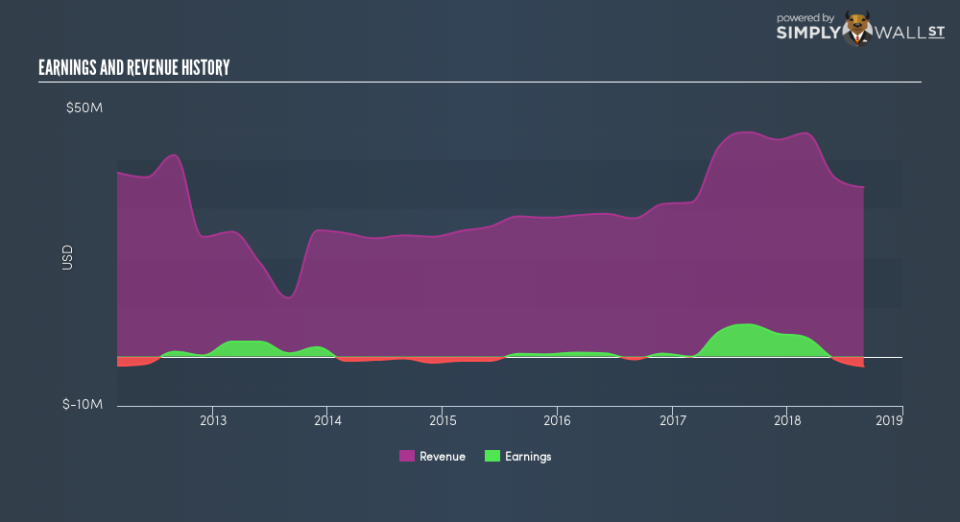Does The Griffin Industrial Realty, Inc. (NASDAQ:GRIF) Share Price Tend To Follow The Market?

If you own shares in Griffin Industrial Realty, Inc. (NASDAQ:GRIF) then it’s worth thinking about how it contributes to the volatility of your portfolio, overall. In finance, Beta is a measure of volatility. Modern finance theory considers volatility to be a measure of risk, and there are two main types of price volatility. The first category is company specific volatility. This can be dealt with by limiting your exposure to any particular stock. The second sort is caused by the natural volatility of markets, overall. For example, certain macroeconomic events will impact (virtually) all stocks on the market.
Some stocks are more sensitive to general market forces than others. Some investors use beta as a measure of how much a certain stock is impacted by market risk (volatility). While we should keep in mind that Warren Buffett has cautioned that ‘Volatility is far from synonymous with risk’, beta is still a useful factor to consider. To make good use of it you must first know that the beta of the overall market is one. Any stock with a beta of greater than one is considered more volatile than the market, while those with a beta below one are either less volatile or poorly correlated with the market.
Check out our latest analysis for Griffin Industrial Realty
Want to help shape the future of investing tools and platforms? Take the survey and be part of one of the most advanced studies of stock market investors to date.
What GRIF’s beta value tells investors
Griffin Industrial Realty has a five-year beta of 0.94. This is reasonably close to the market beta of 1, so the stock has in the past displayed similar levels of volatility to the overall market. Using history as a guide, we might surmise that the share price is likely to be influenced by market voltility going forward but it probably won’t be particularly sensitive to it. Many would argue that beta is useful in position sizing, but fundamental metrics such as revenue and earnings are more important overall. You can see Griffin Industrial Realty’s revenue and earnings in the image below.
Does GRIF’s size influence the expected beta?
With a market capitalisation of US$166m, Griffin Industrial Realty is a very small company by global standards. It is quite likely to be unknown to most investors. It doesn’t take much money to really move the share price of a company as small as this one. That makes it somewhat unusual that it has a beta value so close to the overall market.
What this means for you:
Since Griffin Industrial Realty has a beta close to one, it will probably show a positive return when the market is moving up, based on history. If you’re trying to generate better returns than the market, it would be worth thinking about other metrics such as cashflows, dividends and revenue growth might be a more useful guide to the future. In order to fully understand whether GRIF is a good investment for you, we also need to consider important company-specific fundamentals such as Griffin Industrial Realty’s financial health and performance track record. I highly recommend you dive deeper by considering the following:
Future Outlook: What are well-informed industry analysts predicting for GRIF’s future growth? Take a look at our free research report of analyst consensus for GRIF’s outlook.
Past Track Record: Has GRIF been consistently performing well irrespective of the ups and downs in the market? Go into more detail in the past performance analysis and take a look at the free visual representations of GRIF’s historicals for more clarity.
Other Interesting Stocks: It’s worth checking to see how GRIF measures up against other companies on valuation. You could start with this free list of prospective options.
To help readers see past the short term volatility of the financial market, we aim to bring you a long-term focused research analysis purely driven by fundamental data. Note that our analysis does not factor in the latest price-sensitive company announcements.
The author is an independent contributor and at the time of publication had no position in the stocks mentioned. For errors that warrant correction please contact the editor at editorial-team@simplywallst.com.

